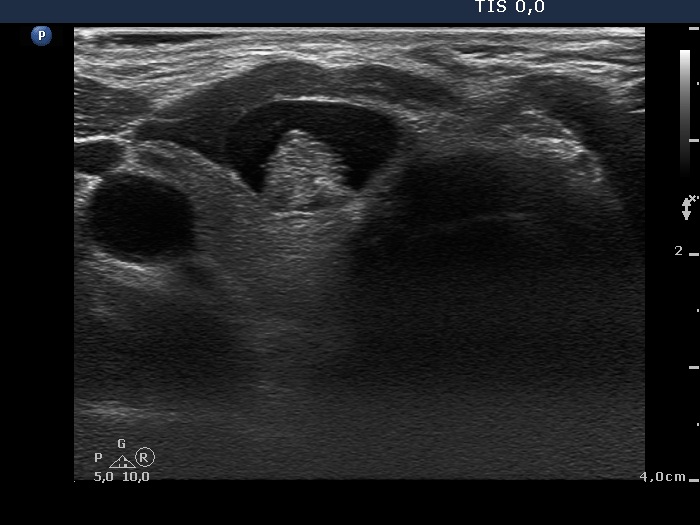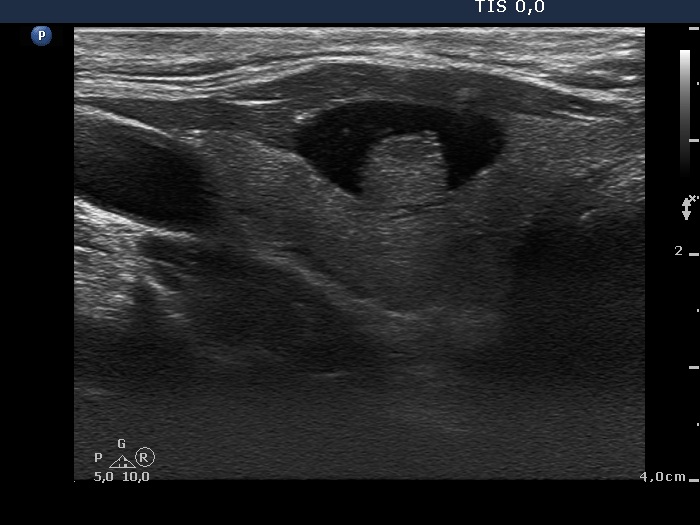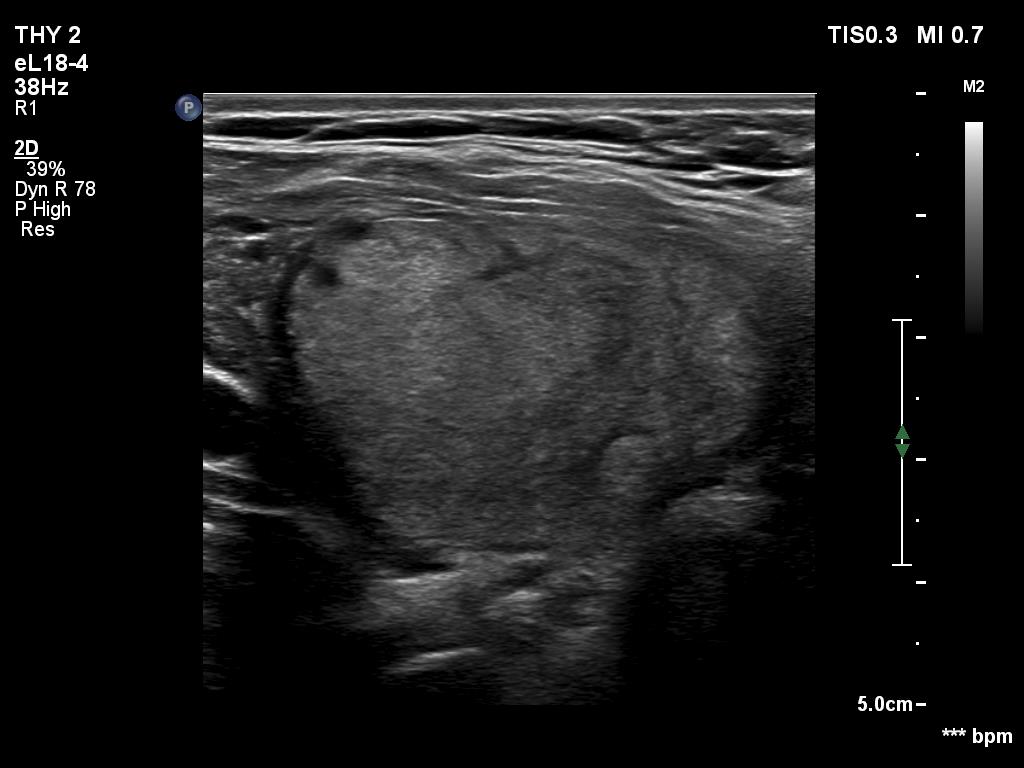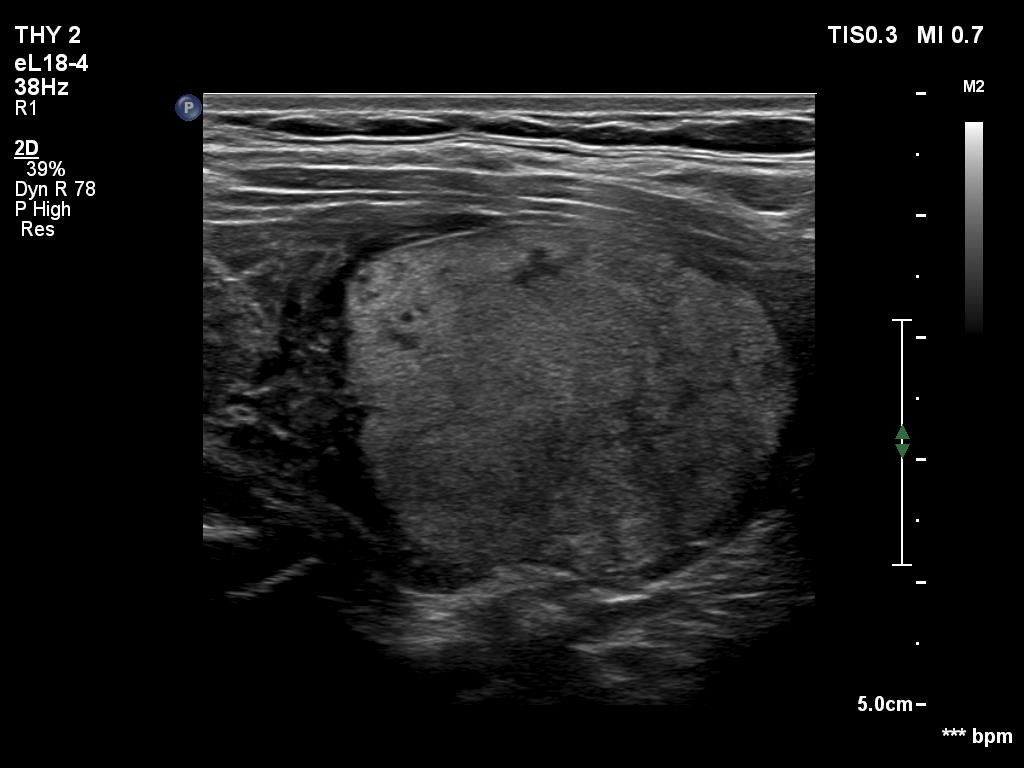TIRADS - Table 3 (large) EU-TIRADS 3 category |
||
Iso/hyperechoic nodules without any suspicious signs are included in this subgroup. There are two issues. The first relates to hypoechoic thyroid. In such nodules, the 'normal reference' tissue is not evident on which we can differentiate between hypoechoic and non-hypoechoic nodule. It can be the extranodular part or the normal submandibular salivary gland, but even a healthy thyroid, as well. The other problem is the lack of clear definition on heterogeneous nodules.
Those cystic nodules which do not fully meet the criteria for EU TIRADS 2 nodules, should be also put into EU TIRADS 3 subgroup. These are mainly those almost purely cysts which have a tiny solid part or wall thickening.
|
|||||||||||||||||||||||||||||||||









